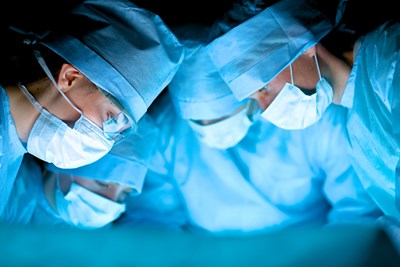An aneurysm is a weak spot in your blood vessels that can appear as a balloon-like bulge that fills with blood. If an aneurysm ruptures, it can cause life-threatening internal bleeding. Since most aneurysms don’t show any symptoms, they can be very difficult to diagnose. There are many different types of aneurysms that can form in different types and locations of blood vessels in your body. The best way to protect yourself against an aneurysm is to understand how they work. If you are at risk for developing aneurysms, here are some terms you should know.
- Brain aneurysm: This is one of the most common types of aneurysms. Brain aneurysms form in the blood vessels that supply blood to your brain, typically at a point where arteries are branching off. Most brain aneurysms have a low risk of rupturing, so if a brain aneurysm is detected, your doctor will assess the size, location, and appearance of the aneurysm to determine if treatment is required.
- Subarachnoid hemorrhage: If a brain aneurysm ruptures, this can cause bleeding into your brain which is called a hemorrhagic stroke. If this occurs in the space between your brain and the thin tissue covering the brain, the type of hemorrhagic stroke is referred to as a subarachnoid hemorrhage which can lead to death if not treated with emergency care immediately.
- Abdominal aortic aneurysm: Your aorta is the major blood vessel that carries blood from your heart to all of your vital organs. When an aneurysm develops here, it will not usually show any symptoms, since the aorta is so large. However, if an abdominal aortic aneurysm were to split or rupture, the internal bleeding it would cause will likely lead to death.
- Atherosclerosis: This is the build-up of fat and other substances in your blood vessels that can result from high cholesterol. If you develop atherosclerosis, this can damage the lining of your blood vessels and increase your risk of aortic aneurysms.
- Hypertension: High blood pressure can also influence the formation of an aneurysm because as your blood pressure increases, this places more stress on your blood vessels which can enlarge or weaken them.
- Ruptured aneurysm: As an aneurysm grows, the arterial wall becomes thinner and weaker. Once it becomes thin enough, the blood pressure within the artery will cause it to burst. An aneurysm that has ruptured causes internal bleeding that can lead to death very quickly if it is not treated with emergency care.
- Leaking aneurysm: Sometimes rather than bursting, an aneurysm will begin to leak blood. This is less serious than a ruptured aneurysm, but still requires treatment to fix the leak as soon as possible.
- Unruptured aneurysm: Aneurysms that are detected before rupturing will sometimes not require any treatment at all. The aneurysm will be assessed based on its size, location, and type before any decisions are made about how to manage or treat it. Often for small aneurysms, there is a low risk for rupture, so the aneurysm will be monitored closely to ensure you are not in danger. Sometimes preventative measures will need to be taken for aneurysms that are larger or fast-growing.
- Endovascular surgery: This is a common procedure that is used to treat aneurysms. It is minimally invasive and involves threading a catheter through an artery in your leg or groin through your body until it reaches the site of the aneurysm. Then either a coil is placed in the aneurysm to disrupt the blood flow and cause the blood to clot, or a graft is placed around the blood vessel to reinforce the weakened section and prevent a rupture.
- Abdominal ultrasound: This is a screening test for abdominal aortic aneurysms that is recommended for men aged 65 to 75 years old who have ever smoked cigarettes. It is able to detect aneurysms before they ever present any signs or symptoms. If you have a family history of aneurysms, you may also choose to have a screening ultrasound.




